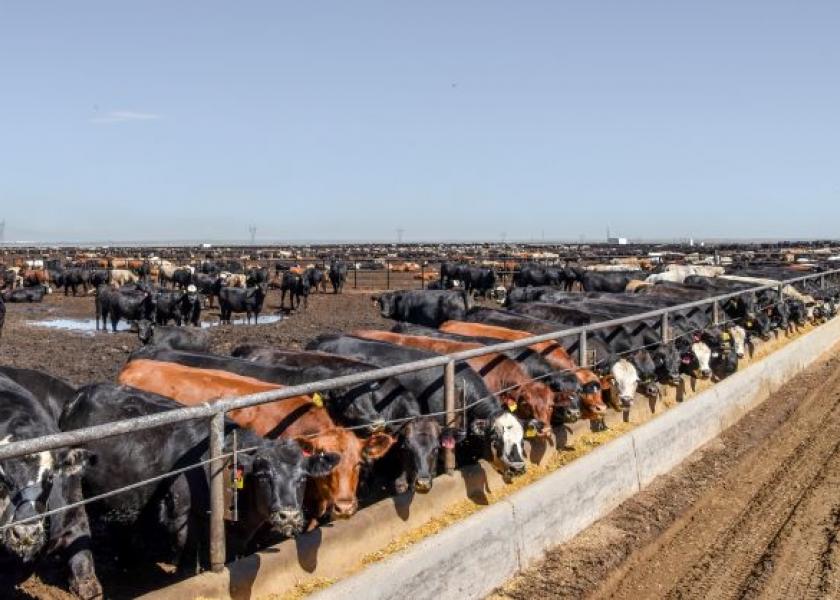Cash Cattle, Wholesale Beef Lower Ahead of Holiday

Weakness in negotiated cattle prices and lower wholesale beef prices dominated trading ahead of the Labor Day holiday. The North saw moderate trade volumes at $182 to $184 per cwt. live and mostly $290 to $292 per cwt. dressed, mostly $2 lower. The South saw light to moderate trade at $178 to $179 per cwt., steady to $1 lower than the previous week. While prices finished the week on a soft note, analysts remind us that the 5-area cash price has traded above $180 per cwt. for a record 14 consecutive weeks.
Feeder cattle traded mixed at $2 lower to $3 per cwt. higher. Calves sold in a wide range from $1 to $6 per cwt. higher.
Cash cattle weakness undercut the cattle complex Friday, with nearby October futures sliding 67.5 cents to $180.15. The closing quote represented a weekly decline of $1.025. Corn market strength likely added to the downward pressure on feeder futures, where the October contract fell $1.375 to end the week at $254.65. That marked a weekly gain of 67.5 cents.
Wholesale beef prices closed lower for the week. Choice boxed beef closed Friday at $314.49 per cwt., down $3.41 per cwt. for the week. Select boxed beef closed the week at $290.29 per cwt., down $2.38 per cwt.
Estimated weekly cattle slaughter was 621,000 head, down 5,000 from the previous week and 21,000 from last year.
Cattle slaughter typically tends to decline from summer highs to early-autumn lows, before posting a post-Thanksgiving bounce. That happens despite the traditional boost to overall supplies as producers cull old, reduced-performance cows from their herds. Conversely, the focus of consumers and grocers also tends to shift from steaks to roasts as colder temperatures arrive. In recent years, cash cattle prices have usually dipped during September as a consequence.







